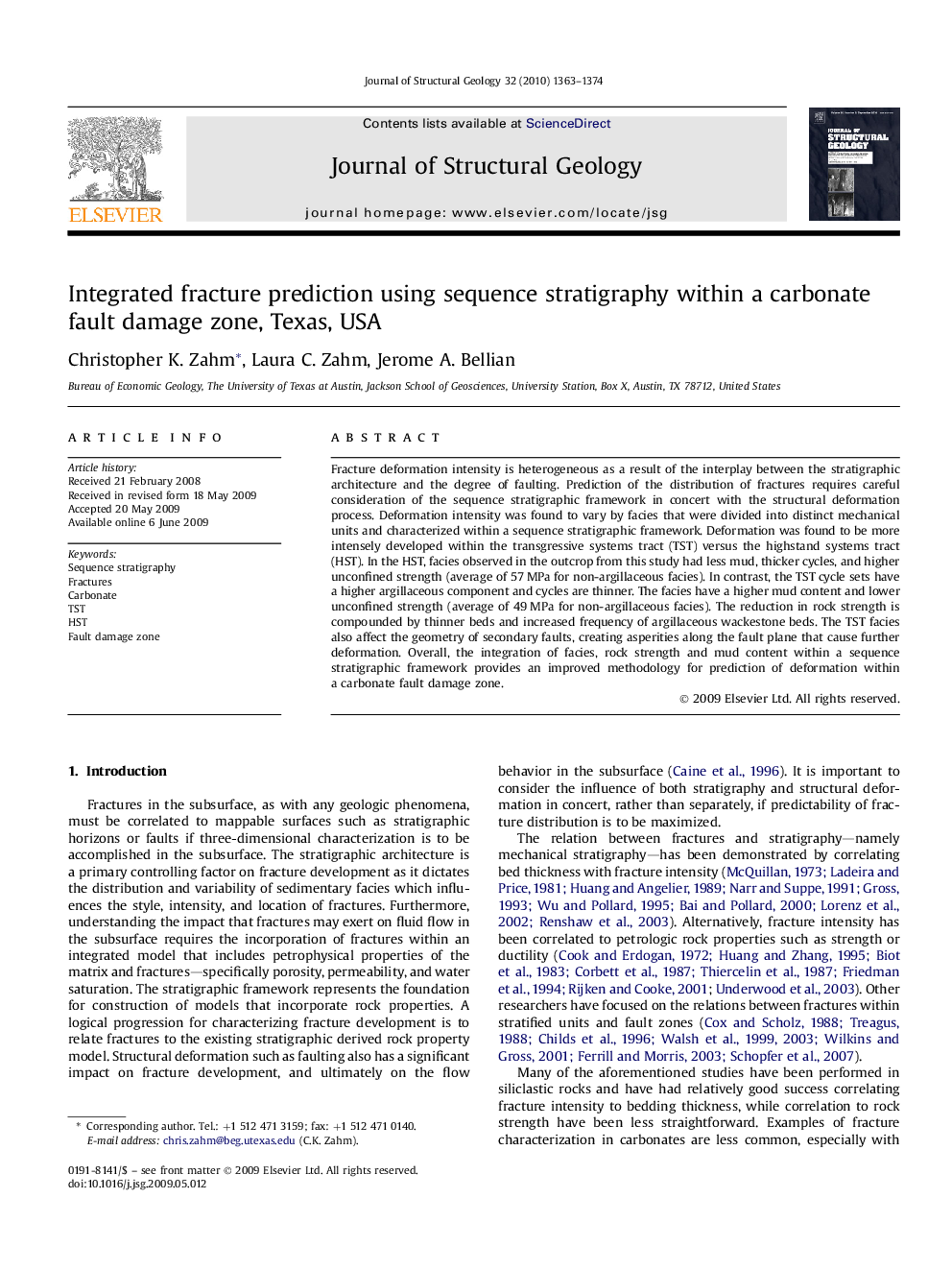| Article ID | Journal | Published Year | Pages | File Type |
|---|---|---|---|---|
| 4733867 | Journal of Structural Geology | 2010 | 12 Pages |
Fracture deformation intensity is heterogeneous as a result of the interplay between the stratigraphic architecture and the degree of faulting. Prediction of the distribution of fractures requires careful consideration of the sequence stratigraphic framework in concert with the structural deformation process. Deformation intensity was found to vary by facies that were divided into distinct mechanical units and characterized within a sequence stratigraphic framework. Deformation was found to be more intensely developed within the transgressive systems tract (TST) versus the highstand systems tract (HST). In the HST, facies observed in the outcrop from this study had less mud, thicker cycles, and higher unconfined strength (average of 57 MPa for non-argillaceous facies). In contrast, the TST cycle sets have a higher argillaceous component and cycles are thinner. The facies have a higher mud content and lower unconfined strength (average of 49 MPa for non-argillaceous facies). The reduction in rock strength is compounded by thinner beds and increased frequency of argillaceous wackestone beds. The TST facies also affect the geometry of secondary faults, creating asperities along the fault plane that cause further deformation. Overall, the integration of facies, rock strength and mud content within a sequence stratigraphic framework provides an improved methodology for prediction of deformation within a carbonate fault damage zone.
